Documentary reviews
Sheffield Doc/Fest 2010 highlights
New films from Patricio Guzmán, Penny Woolcock and John Gianvito – plus Jeff Malmberg’s festival favourite and Morgan Matthews’ latest Audience Award winner
| The Embrace of the River | Marwencol | Nostalgia for the Light |
| On the Streets | Scenes from a Teenage Killing | Vapor Trail (Clark) |
The Embrace of the River
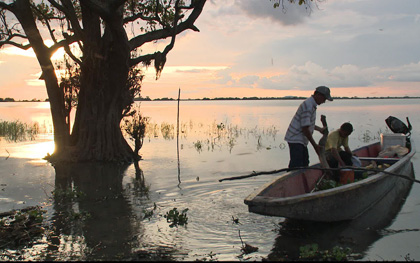
Nicolas Rincon Gille
Belgium, 2010
Along the banks of the Magdelena, Columbia’s longest river, locals tell stories of the Mohan, a mythical creature responsible for drowned friends and relatives, the dwindling fish stocks and other misfortunes that befall these struggling people.
Shot with eloquent and watchful restraint, Gille’s impressive portrait of the life around this major river combines haunting images of the natural world with sequences that capture fishing folk speaking with unguarded ease about their attitudes towards the Mohan. Gille’s inspiration is Ozu, and you can detect the influence in the film’s tone, contemplative, serene and sensitively attuned to the everyday hardships of its ordinary subjects.
But, gradually, from beneath the becalmed surface of the film stories of political violence and repression emerge, as the locals recall the recent murderous attacks by right-wing paramilitaries. Subtly drawing parallels between the baleful influence of the Mahon and the deadly impact of the paramilitary terror, this is a moving exploration of myth and politics that gives voice to impoverished Columbian communities who have been generally ignored and forgotten. Edward Lawrenson
Marwencol
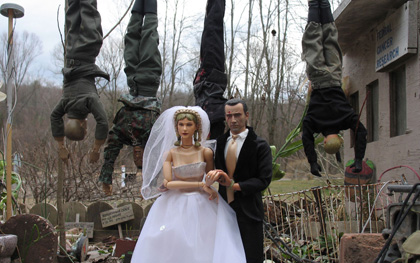
Jeff Malmberg
USA 2010
Malmberg’s spryly entertaining film takes its name from the model village that artist Mark Hogancamp has built and populated with action-men-style figures outside his trailer home in upstate New York. A few years ago Hogancamp was attacked after a drunken argument: the fight ‘cured’ him of his alcoholism, but left him in a coma. After the accident, Hogancamp began constructing Marwencol, a collection of houses in WWII Belgium, populated by American, German and English military figures, all modelled on Hogancamp’s friends and relatives.
Conceived as part of his rehabilitation, the village is a strangely innocent blend of childlike make-believe and adult violence (the events of his real-life attack are regularly played out in photo-shoot stories that Hogancamp stages with his figures, when the SS capture and torture his diminutive alter-ego).
‘Discovered’ by a New York photographer, the project turns Hogancamp briefly into the darling of the New York gallery scene, an accolade he accepts without any guile. Malmberg’s account of this fascinating outsider artist is subdued and stylistically modest, rightly allowing Hogancamp’s work to speak for itself.
Avoiding a flip sense of uplift, the film’s epilogue suggests that Hogancamp’s Marwencol project is, like the theatre work conceived in Synecdoche, New York, without end – and plants the melancholy suggestion there are some wounds art will never heal. Edward Lawrenson
Nostalgia for the Light
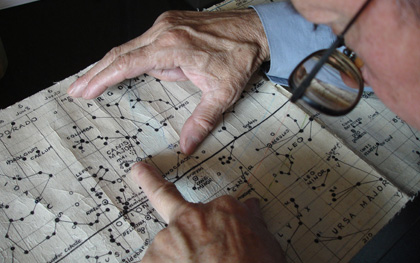
Patricio Guzmán
France / Germany / Chile 2010
As a boy, Patricio Guzmán was fascinated by telescopes, stars, astronomy. As a youth he found himself corralled in Santiago’s National Stadium, staring down the barrels of the Pinochet junta’s guns; and as a master filmmaker (The Battle of Chile; Salvador Allende) his gaze has been dedicated to turning over, probing and preserving the memories of that tortured era.
No wonder he is drawn to Chile’s Atacama Desert, the dryest place on Earth (it’s the brown spot, never clouded, near the border with Bolivia, visible from space), where scientists from around the world gather inside imposingly bone-white, temple-like telescopes to peer into the heavens. The telescopes are time machines, imbibing the secrets of light years, poring over the traces of the universe and the origins of everything.
But the desert itself is also a palimpsest, harbouring pre-Columbian rock carvings and mummies as well as 19th-century mining towns which, premised on indigenous slave labour, were all too easily adapted as concentration camps and mass graves by the junta; and ever since, mothers and sisters of the disappeared have persevered with their own archaeological digs in search of the truth about their loved ones.
Guzmán talks to these people, astronomers, former camp inmates and bereaved alike – most movingly of all a mother of two whose parents were both abducted by the military and whose grandfather taught her astronomy; she now works at the telescope site and finds respite in the idea that we are all part of a recyclable energy. (As another points out, the calcium in the stars is the same calcium as in our bones.) Society ought to understand the women better than the astronomers, says one of the latter, but the reverse is true; for one of the former, “we are Chile’s leprosy, the lowest of the low.”
Guzmán draws out the metaphors, parallels and paradoxes of his desert with astonishing simplicity, clarity and lucidity, the perfect weapons against the cloud of lies and the fog of forgetting. “Those who have memory are able to live in the fragile present,” he summarises. The search is not for death but for life. Nick BradshawOn the Streets
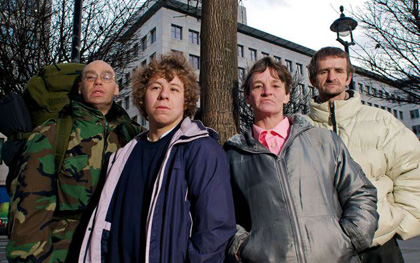
Penny Woolcock
UK 2010
Woolcock spent eight months with London’s homeless for this portrait of the hundreds who live on capital’s streets. Talking to the handful of characters she follows, Woolcock is conversational, concerned, and patient, an approach that yields revealing and intimate glimpses into the lives of her subjects.
What emerges is unsurprisingly harrowing: a Scottish woman tells of the many rapes she has suffered with an almost breezy matter-of-factness; a young Russian man dressed in military uniform (one of a number of Eastern Europeans whom Woolcock speaks to, resented by some of the English homeless for draining resources) reveals countless self-harm scars on his chest and arm.
But the film is also sensitive to the sustaining sense of community that the homeless have created for themselves. If towards the end of the film Woolcock’s questions whether her subjects have suffered abused – almost all have – are uncharacteristically forthright and blunt, the point she is making is still valid: that many homeless people require mental health support as much as accommodation. Edward Lawrenson
Scenes from a Teenage Killing
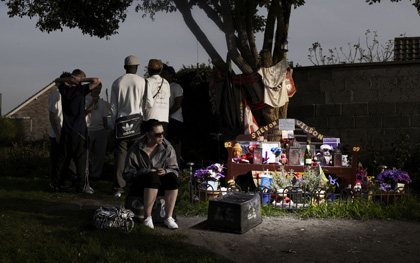
Morgan Matthews
UK 2010
Matthews won the Doc/Fest audience award in 2008 for his BBC2 documentary The Fallen, an extraordinarily moving tribute to all those British military killed in the Afghan and Iraqi wars up until then. His latest is structurally similar (and again won the Audience Award): charting all the teenagers killed by their fellow teens in Britain in 2009, this two-hour documentary is an sensitive, achingly sad tribute to lives cut short. Speaking to relatives of 12 young victims (mostly of knife crime), Matthews offers uncomfortably raw portraits of families in shock and grief.
A complex and challenging portrait of society’s attitude to teen violence emerges, notably the way the media are quick to mislabel any crime involving teenagers as gang-related. But if the film raises difficult issues, it knows not to offer easy solutions. In the most harrowing scene, a young Hackney resident’s emotionally draining funeral is interrupted by fighting between some of the kids in attendance and their rivals from a neighbouring borough. It is an utterly pointless act of violence, whose only effect will be to cause more bloodshed, and Matthews just trains his camera on the chaos with appalled incredulity. Edward Lawrenson
Vapor Trail (Clark)
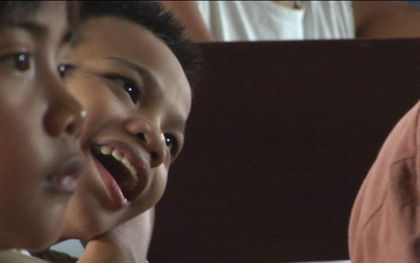
John Gianvito
USA 2010
Gianvito’s film sets out to explore the environmental devastation left by the US military when it abandoned its airbase at Clark in the Philippines. But the film is also about the more far-reaching, equally toxic legacy of Gianvito’s native USA’s colonial designs on the Philippines.
Mixing testimony from local human-rights activists and relatives of victims of the contaminated airbase with a exploration of the relationship between America and the Philippines, this is a dense, contemplative, mournful, quietly angry work. The testimony of locals who have been generally silenced by the international and Philippino media is direct and powerful – an extraordinary long-take interview with a political activist takes place on a beach, as the sunset dims to dusky darkness. But running at over four hours in length, the film doesn’t always justify its durational demands, and the final hour feels especially repetitive and undisciplined. Edward Lawrenson
See also
Rain, speed dates, glamour and fine films: Edward Lawrenson’s postcard from Sheffield Doc/Fest 2010 (November 2010)
Every doc for itself: Nick Bradshaw’s report on the 2009 Sheffield Doc/Fest (November 2009)
